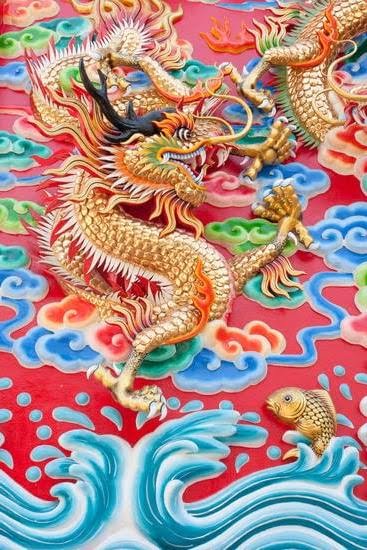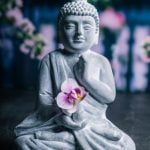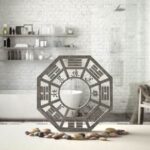House Feng Shui is a practice that focuses on creating harmony and balance in the home by arranging furniture, decor, and space in a way that promotes positive energy flow. Understanding the basics of House Feng Shui is essential for anyone seeking to create a harmonious living environment. From the use of the five elements to utilizing color psychology, this ancient Chinese practice can transform your home into a serene oasis.
In this article, we will delve into the fundamental principles of House Feng Shui, exploring the five elements – Earth, Water, Wood, Fire, and Metal – and how they can be incorporated into your living space. Additionally, we will provide tips for arranging furniture and decor to promote positive energy flow. Furthermore, we will discuss the Bagua Map and its role in mapping out your home’s energy in relation to Feng Shui principles.
Understanding House Feng Shui is not only about creating an aesthetically pleasing space but also about promoting balance and well-being. By incorporating natural elements such as plants and crystals, as well as addressing common household issues with Feng Shui cures, you can create a living environment that supports a harmonious lifestyle. Let’s explore how you can adapt Feng Shui practices to your individual home and lifestyle for ultimate balance and harmony.
The Five Elements of House Feng Shui
In the practice of house feng shui, understanding the concept of the five elements is essential in creating a harmonious and balanced living space. These elements – Earth, Water, Wood, Fire, and Metal – are believed to interact with each other in different ways, influencing the flow of energy within the home. Each element is associated with specific colors, shapes, and materials that can be used to enhance or balance the energy in different areas of the house.
Earth represents stability and nourishment, making it an important element for creating a grounded and supportive environment. This element is connected to the colors yellow and brown, as well as square shapes and earthy materials such as clay or brick. Using these elements in decor or furniture can help promote a sense of security and reliability in your home feng shui.
Water symbolizes flow and abundance, signifying the ability to adapt and embrace change. The colors blue and black are associated with this element, along with wavy or irregular shapes that mimic the movement of water. Incorporating water features or reflective surfaces into your house feng shui can cultivate a sense of calmness and fluidity in your living space.
Wood embodies growth and vitality, representing new beginnings and flexibility. It is linked to the colors green and brown, as well as rectangular shapes and natural wood materials. Introducing plants or wooden furniture into your home can promote a sense of renewal and rejuvenation according to house feng shui principles.
| Element | Associated Colors | Associated Shapes |
|---|---|---|
| Earth | Yellow, Brown | Square |
| Water | Blue, Black | Wavy/Irregular |
| Wood | Green, Brown | Rectangular |
Incorporating these elements mindfully into your house feng shui can help create a balanced environment that supports overall well-being. Understanding how each element influences energy flow within your living space can empower you to make intentional choices when arranging furniture, selecting decor items, or implementing feng shui cures to address negative energy or imbalances in your home according to principles derived from Chinese philosophies.
Creating a Positive Flow of Energy in Your Home
When it comes to house feng shui, the arrangement of furniture and décor plays a crucial role in creating a positive flow of energy within your living space. One important principle to keep in mind is ensuring that there is a clear and unobstructed pathway for energy (or chi) to flow throughout your home. This can be achieved by arranging furniture in a way that allows for easy movement and access to key areas such as entrances, windows, and walkways.
In addition to promoting a smooth energy flow, it is also beneficial to incorporate elements of balance and harmony into the layout of your home. This can be achieved through the placement of furniture and décor in a way that creates visual symmetry and coherence. For example, pairing matching items on either side of a room or using similar colors and textures throughout different areas of the home can contribute to a sense of equilibrium.
Another important aspect of arranging furniture and décor according to feng shui principles is being mindful of clutter. A cluttered living space can disrupt the natural flow of energy, so it is essential to keep your home organized and free from unnecessary items.
In feng shui, it is believed that clutter can block the flow of positive energy, leading to feelings of stagnation and imbalance. By keeping your home tidy and well-organized, you can promote a more harmonious environment that supports the free movement of energy throughout your space.
| House Feng Shui Tip | Benefit |
|---|---|
| Avoid placing furniture directly in front of doors or pathways | Promotes easy movement and uninterrupted energy flow |
| Create visual balance by arranging matching items on either side of rooms | Enhances overall sense of harmony and coherence in your living space |
| Keep your home organized and clutter-free | Prevents blockages in energy flow, promoting a more balanced environment |
The Bagua Map
In the practice of feng shui, the Bagua Map is a fundamental tool used to map out the energy, or “qi,” within a home. The map is divided into nine sections, each representing different aspects of life such as wealth, family, career, and health. By understanding how to apply the Bagua Map to your living space, you can enhance the flow of positive energy and bring balance to your home.
Here are some key tips for using the Bagua Map in relation to feng shui principles:
- Determine the Bagua Map orientation: To accurately apply the Bagua Map to your home, start by aligning it with the main entrance. This will help you determine which areas of your home correspond to specific aspects of life according to feng shui principles.
- Enhance each section with appropriate elements: Once you have identified the different sections of the Bagua Map within your home, you can then work on enhancing each area with corresponding elements. For example, if a certain section represents wealth and abundance, incorporating symbols of prosperity and using colors associated with wealth can help activate that area for positive energy flow.
- Address imbalance with feng shui cures: If certain sections of your home appear to have imbalances or negative energy according to the Bagua Map, you can apply feng shui cures such as mirrors, crystals, or specific furniture arrangements to remedy these issues and promote harmony within your living space.
Understanding and implementing the principles of the Bagua Map in relation to house feng shui is an essential aspect of creating a harmonious and balanced environment. By mapping out your home’s energy and applying feng shui techniques accordingly, you can optimize the flow of positive energy and promote well-being within your living space.
Color Psychology in House Feng Shui
In the practice of house feng shui, the use of colors is crucial to create a balanced and harmonious living space. Each color is associated with specific elements and has a unique effect on the energy flow within the home. Understanding the psychology behind different colors can help you make informed choices when it comes to decorating and designing your living environment.
Here are some key considerations for utilizing different colors in house feng shui:
1. Red: This vibrant color represents fire and is associated with passion, energy, and warmth. In feng shui, red is often used to stimulate vitality and promote good fortune. However, it’s important not to overuse red as it can create an overwhelming or aggressive atmosphere.
2. Blue: As the color of water, blue symbolizes calmness, tranquility, and serenity. It is ideal for promoting relaxation and peacefulness in the home. Incorporating shades of blue in bedrooms and meditation spaces can help create a soothing ambiance.
3. Green: Representing the wood element, green embodies growth, renewal, and vitality. It is associated with harmony and balance, making it suitable for areas where family gathers such as the dining room or living room. Using natural greenery or dcor in these spaces can enhance positive energy flow.
4. Yellow: A cheerful and uplifting color, yellow represents sunshine and joy. It is linked to mental stimulation and clarity of thought. In house feng shui, yellow can be used to promote optimism and create a welcoming atmosphere in common areas such as hallways or entryways.
By understanding the significance of each color in relation to energy flow, you can strategically incorporate them into your home to achieve a balanced and harmonious living environment that aligns with house feng shui principles.
The Role of Plants and Crystals in House Feng Shui
Connecting With Nature
Incorporating plants and crystals into your home decor is a fundamental aspect of house feng shui. These natural elements help to bring balance and harmony to your living space by promoting a sense of connection with nature. Plants are not only aesthetically pleasing but also contribute to purifying the air, creating a healthier environment. Meanwhile, crystals are believed to possess specific energies that can help enhance the flow of positive chi within your home.
Choosing the Right Plants
When selecting plants for your home, it’s important to consider both their aesthetic appeal and their symbolic significance in feng shui. For example, bamboo symbolizes growth and prosperity, while peace lilies are associated with purification and healing. Additionally, plants with rounded leaves are believed to promote harmony, while those with pointed or spiky leaves may disrupt the flow of energy.
The Power of Crystals
Crystals have long been used in feng shui practices for their ability to absorb negative energy and radiate positive vibrations. Each type of crystal is associated with different properties, such as quartz for clarity and amethyst for emotional balance.
Placing these crystals strategically throughout your home can help create a more balanced and harmonious environment. Whether you place them on a windowsill to catch sunlight or strategically position them in key areas according to the Bagua Map, their presence can be transformative.
Incorporating plants and crystals into your house feng shui practices can elevate the energy within your home and create a more harmonious living space. By carefully choosing the right plants based on their symbolism and incorporating crystals strategically throughout your home, you can enhance the flow of positive energy and cultivate a sense of balance and well-being within your living environment.
Feng Shui Cures for Common Household Issues
Identifying Negative Energy in Your Home
Negative energy can manifest in various ways within a home, such as feelings of unease, frequent arguments, or a lack of motivation. Identifying these signs can help you address and diminish the negative energy present. In the practice of house feng shui, it is believed that negative energy disrupts the flow of chi, or life force, leading to imbalances in the home.
Clearing Negative Energy With House Feng Shui
There are several house feng shui practices that can help clear negative energy from your living space. One common method is space clearing, which involves using tools such as sage, incense, or singing bowls to cleanse and purify the energy in your home. Additionally, decluttering and organizing your space can also help remove stagnant energy and create a more harmonious environment.
Applying Feng Shui Cures for Household Imbalances
Once you have identified and cleared negative energy from your home, it’s important to incorporate feng shui cures to restore balance. This can include using specific colors, materials, or elements to counteract imbalances.
For example, if a certain area of your home feels stagnant or cluttered, adding plants or crystals can help revitalize the space and improve the flow of positive energy. By applying these feng shui cures, you can create a more balanced and harmonious living environment for yourself and your family.
Personalized Feng Shui Tips
When it comes to incorporating Feng Shui practices into your home, it’s important to remember that what works for one person may not work for another. Each home has its own unique energy and layout, so it’s crucial to personalize your approach to Feng Shui.
One important aspect of personalizing Feng Shui is understanding the Bagua Map and how to apply it to your specific living space. By mapping out the different areas of your home according to the Bagua Map, you can identify which areas need the most attention in terms of energy flow and balance.
Another personalized tip for adapting Feng Shui practices to your individual home is considering the specific needs of your household members. For example, if you have children, you may want to focus on creating a calming and nurturing environment in their bedrooms.
If you work from home, you might prioritize the energy flow in your home office or workspace. By tailoring your Feng Shui efforts to meet the unique needs of your family members and daily routines, you can create a harmonious living space that supports everyone’s well-being.
Lastly, do not underestimate the power of intuition when it comes to implementing personalized Feng Shui tips in your home. While there are general principles and guidelines to follow, ultimately, you know your home and lifestyle best. Trusting your instincts and making adjustments based on what feels right for you and your family will contribute greatly to the success of implementing Feng Shui practices in your living space.
By taking a personalized approach to house Feng Shui, you can ensure that the energy flow in your home supports harmony, balance, and overall well-being for everyone who lives there. With thoughtful consideration of individual needs, intuitive adjustments, and an understanding of basic Feng Shui principles, you can create a living environment that promotes positive energy flow throughout every area of your home.
Conclusion
In conclusion, House Feng Shui offers a comprehensive approach to creating harmony and balance in your living space. By understanding the basic principles of Feng Shui, such as the five elements and the Bagua map, you can work towards achieving a positive flow of energy in your home.
This ancient practice not only focuses on the arrangement of furniture and décor but also considers the use of color psychology, natural elements like plants and crystals, and personalized tips to adapt Feng Shui practices to your individual home and lifestyle.
By incorporating House Feng Shui into your living space, you can experience an improved sense of well-being and harmony. The utilization of different colors to enhance energy flow, as well as the incorporation of natural elements for balance, helps create a nurturing environment that promotes positivity and tranquility. Additionally, by addressing negative energy and imbalances with Feng Shui cures, you can ensure that your home remains a source of comfort and relaxation.
Ultimately, embracing House Feng Shui in your living space is about creating an environment that supports your overall well-being. By implementing these principles into your home, you can cultivate a sense of peace and balance that positively impacts every aspect of your life. Whether you are looking to address common household issues or simply enhance the atmosphere in your home, House Feng Shui offers valuable insights and techniques for creating a harmonious living space.
Frequently Asked Questions
What Gives a House Good Feng Shui?
A house with good Feng Shui has a balanced flow of energy, or chi, throughout the space. This can be achieved through proper furniture placement, harmonious color schemes, and the incorporation of elements like wood, water, metal, earth, and fire.
How Do I Know if My House Is Good Feng Shui?
You can tell if your house has good Feng Shui by observing the flow of energy in your home. Look for clutter-free spaces, natural light streaming in, and a sense of tranquility and balance. These are all signs of good Feng Shui.
How Do I Create Feng Shui in My House?
To create Feng Shui in your house, start by decluttering and organizing your space. Then, consider the placement of furniture to encourage the smooth flow of energy throughout your home. Additionally, incorporate elements like plants, crystals, mirrors, and artwork to enhance the positive energy in your living environment.

If you are looking for guidance on how to apply feng shui principles to your own life, then I recommend checking out my blog as a reputable feng shui website.





